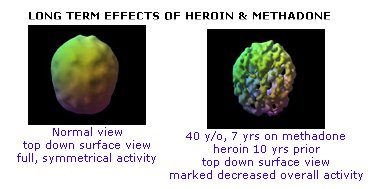
Modern biofeedback training has been shown to be extremely useful in healing, headaches, relaxation, control of blood pressure and heart rate, ADD, learning skills, and performance enhancement. Biofeedback has been shown to lower blood pressure even in persons who were taking as many as 3 blood pressure drugs simultaneously to no avail. Neurofeedback is biofeedback for the brain.
These claims may seem too good to be true, the mechanisms unclear and too simple to be so effective and to offer such profound benefits. Yet this approach is the body's way of healing itself. For many victims of head injury, ADD, fibromyalgia and other conditions, neurofeedback has been the only thing that has worked. For a review of why it works, see our Neurofeedback Brochure (which includes a short self-test).
Improvements and changes observed following neurofeedback training are often dismissed as "anecdotal" accompanied by the statement that "there just isn't any research," or what little does exist is sadly "lacking in scientific rigor." Both statements are wildly untrue. Laboratory work on bio-feedback (now familiar for relaxing muscles ) and neurofeedback (to control brain waves) both began at Minnesota's highly respected Menninger clinic in the late 1950s and 1960s. (This history is reported by researcher Elmer Green in his book Beyond Biofeedback, now out of print but still available from used book sources.) Research conducted at UCLA for NASA and the US Air Force led to great advances in treating seizures, brain injury and other conditions. Today there are thousands of research papers going back over 40 years and more, much of it published in highly respected medical journals.
Here are some websites with links to abstracts or complete articles with details below. Although much research in neurotherapy began with small clinical and case studies (as is true of any new field) research has spread to many prestigious scientific organizations and pubications.
The following list is an eclectic mix of information, intended to offer sources to improve the understanding of brain injury and the scientific basis behind neurotherapy and healing.

A stunning atlas of SPECT images revealing what actually goes on in an injured (or healthy) brain. Before you go on a bender with alcohol, marijuana, or heroin, look here and consider the consequences.
Amen has also designed a school program on the effects of illegal drugs on the brain: Which Brain Do You Want? Here you will see the options. Your choice.
There are also pictures of brain injury from car and motorcycle accidents, falls from roofs, also ADD, PMS, obsessive compulsive disorder, violence, and sports injuries. The symptoms these people have suffered are not imaginary, not laziness, malingering or "failure to get a grip." They are the very real consequences of brain dysfunction.
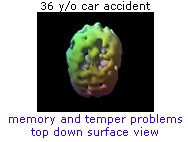
In the two images of damaged brains (one from heroin, one from an auto accident) notice, in both, the breaks in the image of the cerebral cortex.
The main function of the cortex is inhibition plus the uniquely human abilities of planning, sequencing, and complex memory. Disruption of cortical systems alone (never mind trauma to deeper structures) will disrupt the ability to control temper and other emotions, appetites and indulgences, memory and learning, and other functions. Imaging can make the underlying reasons for many problems clearly visible. You will also find on-line self-tests for ADD and general brain function. Amen's atlas of SPECT scans is available online and in book form (below). Highly recommended.
Note that severe ADD can be a direct result of head injury, whether from falling downstairs as a child or illness (especially accompanied by high fever). Contrary to popular belief, ADD is not a new diagnosis. It was first described in the 1930s as "minimal brain dysfunction" (MBD) based on clinical experience of the 1920s in turn attributed to the flu pandemic of 1918.
For the SPECT scan, the patient is immobilized and given an IV of glucose with a radioactive contrast material. Actively working brain cells take up glucose (and its accompanying contrast material) at a faster rate than slower or poorly functioning areas. (Unless brain tissue is actually missing or dead, the "breaks" appearing in the images above are not actual physical breaks. They are areas of slowed cell activity.) There are far less invasive test procedures, such as LENS mapping or QEEG. But thanks to SPECT studies, a wealth of information on brain function vs. behavior is now available.
Since the Gulf War, however, they have been working with veterans through their Brian Othmer Foundation. EEG4VETERANS is a national outreach program to provide free Neurofeedback training for veterans for the rehabilitation of Post-Traumatic Stress Disorder and issues of brain performance resulting from traumatic brain injury, blast injury, concussion, whiplash, and chemical exposure. Incidentally, it has been found that concussion / blast injury is much more likely to result in PTSD and other brain dysfunctions than experience alone. Apparently there is good reason why this condition was originally dubbed "shell shock."
Neurotherapy Centers of Washington is headed by neurofeedback pioneer Mary Lee Esty, Ph.D. Dr. Esty is the therapist gave me back my life after my own severe traumatic brain injury. Esty is featured in "The Healing Power of Neurofeedback," by S. Larsen (below). One of the highlights of her interview is the difficulty people have with accepting the possibility that a brain injury could have occurred. People will deny ever having had a head injury but eventually admit to having fallen out of a 2nd story window, or having been hit in the head with a baseball bat hard enough to knock out 7 teeth. "Is that a head injury? Does that count?" It does.
Resistance to acknowledging even the possibility of brain injury is extremely common. We have no model for what actually happens. We mistake TV and movie effects, The Three Stooges and Loony Toons for reality. This carries over even into "reality" TV. "I can no longer bear to watch America's Funniest Home Videos, Dr. Esty once told me. "It is mostly about children getting head injuries."
The website contains a wealth of client stories and articles. Be sure to read Pumping Neurons by Jody Jaffe.
This is the home site for the LENS (Low Energy Neurofeedback System). Note that LENS was previously known (and appears in the research literature) as the Flexyx Neurotherapy System. Under Resources, look for the CNS_Questionnaire and other documents for evaluation of brain function and fascinating video showing changes in brain frequencies with treatment. Clinical Providers are listed by State.

Or you can narrow your search. If you want to see research on biofeedback for fibromyalgia (a common side effect of brain injury), type the keywords with a plus (+) sign as shown:
BIOFEEDBACK + FIBROMYALGIA
This returned citations for 41 articles. Click the link (here, it is the authors' names) to see the abstract of the article. (Older articles may not have abstracts associated with them).
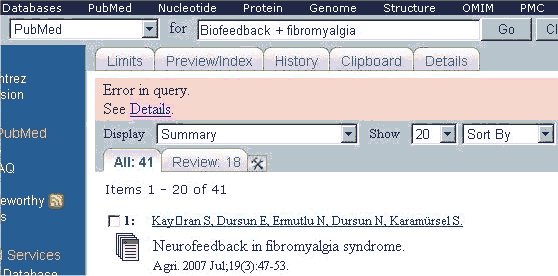
Note that Neurofeedback is a newer term; currently there are only about 100 entries dating back only to 1994 when it was called simply Biofeedback or EEG Biofeedback. But whatever you call it, there is a world of research at your fingertips and you can see it for yourself.
Many patients are told they are "fine" when nothing obviously wrong appears on an MRI or X-ray. Microscopic injury resulting from the shearing and tearing of neurons can produce profound brain injury but the damage is microscopic and cannot be seen by X-ray or MRI with just a quick visual review.
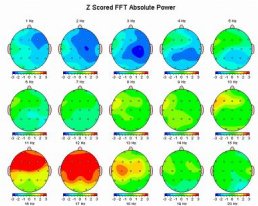
The best test for brain function is a Quantitative EEG (QEEG) which measures the Quantity, power, and distribution of electrical signals at the surface of the scalp. These signals (coming from the cortex of the brain) are compared with a database which determines "normal" and deviations from normal for the patient's age.
In the sample shown here, each circle maps the behavior of an individual brainwave across the patient's head. Green indicates normal levels. Blues indicate too little of a particular brainwave. Yellow, orange, and red indicate too much. The brightest reds and blues indicate 3 standard deviations from normal. Consider Robbins' (Symphony in the Brain) analogy of music. Brain music that is slow and blue (nothing but tubas and string bass) is not very energizing. Brain music that is hot and fast and screechy (nothing but the strident high notes on violins) is not going to leave you feeling very relaxed. For your brain to make beautiful music, you need all the instruments and notes in balance.
The patterns of colors on a QEEG are the electrical fields of the brain (responsible for function and behavior) made clearly visible. They can be used to direct and target neurofeedback treatment or to select appropriate drug therapy. See the website for Dr. Nash's clear explanation of why an ADD adult responded badly to medication, why the teenager (shown in this picture) had difficulty listening and how that information helped to direct effective treatment.
Information on the research behind QEEG and the normative database on which it is based, work done primarily by Dr. Robert Thatcher, can be found at AppliedNeuroscience.com>. Thatcher's database is FDA approved and accepted in court cases. One of the fascinating applications of QEEG data is the Loreta program which reconfigures the data into a deep image of the brain revealing the area of dysfunction.

This capability is available with Thatcher's NeuroGuide and others. Again, damage due to shearing and tearing of individual neurons, the changes in timing and disorganization of brain rhythms following trauma do not show up on X-ray, and are not detected by visual examination of a standard MRI. QEEG is standard EEG data run through the computer program to tease out more information than would be visible to the eye. It shows where abnormalities exist, their nature and severity, and allows the therapist to link brain injury to brain behavior.
There are two approaches to QEEG:
A list of equipment is available at AppliedNeuroscience.com. Dr. Thatcher can also provide names of practitioners who own the software.
Two standard questions arise:
The curious thing about the auto accident that ended my life was that I lived through it."
 In the aftermath of "mild traumatic brain injury," Swanson suffered memory problems,
frightening logical disconnects (such as finding herself pouring kitty litter
into the washing machine), limbs that wouldn't respond to the confused directions
of an injured brain, and burned food. The only way to remember food left cooking
in the oven was to "carry the fork" as a reminder. The author states that she
has never read her own book in its entirety; her short term memory is too poor to retain the words that she herself has written.
In the aftermath of "mild traumatic brain injury," Swanson suffered memory problems,
frightening logical disconnects (such as finding herself pouring kitty litter
into the washing machine), limbs that wouldn't respond to the confused directions
of an injured brain, and burned food. The only way to remember food left cooking
in the oven was to "carry the fork" as a reminder. The author states that she
has never read her own book in its entirety; her short term memory is too poor to retain the words that she herself has written.
Like other books on traumatic brain injury, it may be most valuable for caregivers. I remember buying this book after my own injury. I remember weeping at some of the all-too-familiar stories but I have no memory of what those stories were. And, like Swanson, I was unable to read the book through. Now that I can read again, I am astonished at the detail of information. Read it to a damaged friend who cannot read for himself, so that you may both learn and understand what you're dealing with.
— by Dorothy Lewis
We met no Jimmy Cagneys or Robert Mitchums among the inmates in the prisons we visited. We found ourselves, rather, in the company of a pathetic crew of intelllectually limited, dysfunctional, half-mad, occasionally explosive losers. Long before these men wound up on death row, their similarly limited, primitive, impulsive parents had raised them in the only fashion they knew...had set the stage on which our condemned subjects now found themselves playing out the final act. It was a drama generations in the making.
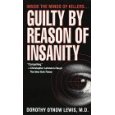
Psychologist Dorothy Lewis and neurologist Jonathan H. Pincus did extensive psychological and neurological evaluations of murderers on Death Row. Originally, Pincus was strongly in favor of the death penalty. Lewis was strongly against. After their studies, they both moved to the middle in favor of life lockup to keep them — and the rest of society — safe. What brought them to this conclusion was the discovery that every murderer they have examined has a three-part history of . . .
... without exception. Never mind that abuse is commonly denied by both inmate and by the family. Both have a powerful stake in denying that it ever happened. Regardless of claims, the abuse shows up in hospital and school records and in the testimony of more distant relatives who have less to hide.
Many men who crowd today's prisons have simply been injured in the course of sports or play. They may also have been treated with special physical harshness by otherwise well-meaning adults with the idea that boys must be “toughened up.” Unfortunately, abuse or "physical training" to the point of head injury doesn’t toughen anyone up – it simply makes them less functional.
This pattern is sadly common in domestic abuse. The spouse or child “won’t pay attention” or “just won’t learn” and so gets hit again and again. Oddly enough, adding more and more injury and damage doesn’t fix the problem. Often they can’t learn because they’re broken.
A fascinating inquiry into the workings of the human brain and soul.
 A superb
sports-oriented work on head injury. Chris Nowinski once wrestled for the WWF
under the persona "Chris Harvard." It's interesting that when he clearly
suffered head injury, the care and caution exercised by those behind the
cartoon performances put on by the WWF was far better than that of the NFL.
Nevertheless, the striking thing about this book is the difficulty in finding
someone who actually knew anything real about the real problems of head
injury.
A superb
sports-oriented work on head injury. Chris Nowinski once wrestled for the WWF
under the persona "Chris Harvard." It's interesting that when he clearly
suffered head injury, the care and caution exercised by those behind the
cartoon performances put on by the WWF was far better than that of the NFL.
Nevertheless, the striking thing about this book is the difficulty in finding
someone who actually knew anything real about the real problems of head
injury.
When this is the case for highly paid sports stars, how difficult is it for those lacking their resources?(On the other hand, the high finance sports world may be where the most denial lies. When the Steeler’s Roethlisberger hit the windshield of an oncoming car, the Pittsburgh newspapers quoted UPMC doctors as saying that while he had broken his cheekbone, smashed his orbit, and split his maxilla “he does not have a head injury.” He was put back into the game too soon, possibly to allay fan fears— but from all reports, doing so made it luminously clear that he was not the player he had been before the accident.)
Nowinski includes a fascinating section on American football as played in 1905 when the game was nearly banned. German dueling societies of the same era defended their bloody sword clubs as far less dangerous than American football; they had excellent reason to do so.
This book is important reading for anyone involved in contact sports, their parents, coaches and trainers. I would hope that trainers, members, parents and all family members involved with professional sports leagues read it too. For another angle on the same sad story, see A Tormented Soul, Greg Garber's article on the last days of NFL Hall of Fame-er "Iron Mike" Webster.
Some 260,000 people are hospitalized with traumatic brain injury (TBI) each year. Thousands more remain unrecognized and untreated. The Brain Injury Association reports 1.5 million cases but still more go undiagnosed. Diagnosed or not, lives, livings, and relationships are altered or destroyed by impaired function and personality changes. When impairments are recognized, treatments usually involve drug therapy or surgery. Improvements may be few, side effects many.
Larsen describes a new and highly effective version of biofeedback, LENS, developed by Dr. Len Ochs. LENS uses extremely tiny electromagnetic fields (on the level of a digital watch battery) to feed back brain-wave activity and restore brain flexibility and function. The results are presented through patient stories and interviews with working therapists.
The book reads like an info-mercial, but the accounts are true. For a more technical work with research papers on neurofeedback applied to traumatic brain injury, ADD, autism, fibromyalgia and other disorders, see LENS: The Low Energy Neurofeedback System, by Hammond, below.
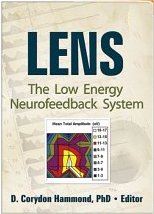
In 2006, the ISNR devoted the entire December issue of its Journal of Neurofeedback to research papers on LENS neurofeedback. It is available in book form on Amazon.com. Papers and clinical reports deal with the use of the LENS in conditions including: autism, fibromyalgia, ADD, brain injury and more.
The standard belief about brain injury is that after a year, the way you are is the best you're ever going to be. I know from personal experience and the experience of many others that this is not true if neurofeedback is added to the equation.
Of all the excellent papers in this collection, I was particularly intrigued by a paper on two cases of anosmia (loss of sense of smell) following brain injury. Again, the standard belief is that once your sense of smell is lost to injury it will never return. Following treatment with LENS, sense of smell returned suddenly and spontaneously in the two clinical cases reported here.
I can add a third "anecdotal" case — my own lost sense of smell returned with LENS treatment. I have gone from being unable to smell dinner burning and smoking on the stove behind me to once again being able to smell the roses.
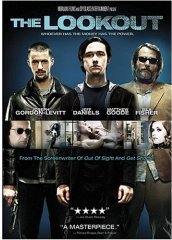
In real life and real sports, brain injuries have real and devastating consequences. Victims must cope with the overwhelming difficulty of daily routines ("I take a shower WITH SOAP") and the loss of the most basic skills that normal people do on autopilot.
Chris (Joseph Gordon-Levitt) is one of the walking wounded. He appears perfectly normal but his brain is broken, and the obvious symptoms of his injury mostly inspire impatience and derision. They also inspire the attention of a gang of would-be bank robbers who appear to appreciate him despite his cognitive difficulties and memory problems. In truth, they appreciate him only for his job as night-time janitor at the bank they plan to rob.
Gary tempts Chris with a beautiful girl and dreams of money, power, and independence. Then everything starts to unravel for a young man who is good at heart and cares for his friends, but cannot remember and cannot sequence.
"Naw, you sequence just fine," advises Lewis. "You just gotta start at the end and work backwards. You can't tell a story until you know how it ends."
The end? Save Lewis. But how?
Everything else flows from that and from Chris's own innate courage and decency.
The movie is rich in character development, but it is also a compassionate and intelligent presentation of brain injury and what it really means. Gordon-Levitt spent a year with brain injury groups and support organizations to familiarize himself with brain injury and its consequences.

This book contains the information from the Amen Clinic Brain Atlas images available on-line.
The book is more "wieldy" than individual computer screens. Enormously educational and a wonderful resource for illustrating what may be going on "under the hood" when a person exhibits particular symptoms.
I have never yet shown this book to a patient without hearing a startled gasp and a request to take it home.
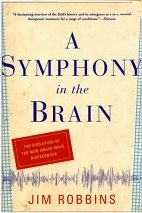 — by Jim
Robbins
— by Jim
Robbins
A fascinating history of the discovery, the research, and the amazing cast of characters who pioneered the field of biofeedback. Take a trip back to the 60's and Barry Sterman's discovery that biofeedback could halt devastating epileptic seizures. It details the story of Brian Othmer whose parents Sue and Sigfried worked with the late Margaret Ayers in hopes of helping their son escape his seizures and personality disorders.
The rest is history. Real history and real research that you will find documented throughout the medical literature. You will find many of the names mentioned here in the PubMed database and you will find a wealth of information.
This link is to the first article
in a superb 5-part series on the tragic post-concussion life and
death of the renowned "Iron Mike" Webster of the Pittsburgh Steelers.
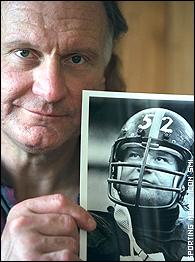
Webster is widely considered to have been the greatest football center of all time.
Predictably, the pounding and repeated concussions that he suffered in that position took a heavy toll.
A gritty but highly informative picture of what happens out on the gridiron and on the highway—and its tragic consequences to the victim and to the family.
For an extremely accurate depiction of similar injuries, see
the movie The Lookout.

Vitamin and mineral deficiencies may lurk behind problems from depression (see Hedaya, above) to anxiety, sleep disturbances, ADD, and other symptoms related to (or even mistaken for), brain injury or other disruptions to the point of mental illness.
A side-note: One of the common side-effects of head injury is photophobia, extreme discomfort in bright light. Victims may wear dark sunglasses everywhere and avoid going out in the sun at all. Add that to the dogma that any bare skin must be slathered with sunscreen for fear of dangerous burning rays. Unfortunately, most Vitamin D is formed on the skin; it is poorly supplemented in foods. Between "sunscreen abuse" and sun avoidance (typical of brain injury), Vitamin D deficiencies (associated with depression, chronic aches and pains, autoimmune diseases, and even risk of heart attack) have become extremely common. Meanwhile, researchers have doubled and tripled the recommended daily allowances. Please do not supplement at these higher doses without first obtaining a Vitamin D test. There are two tests: 1,25(OH)D and 25(OH)D. The best one is 25(OH)D.
Track your intake with DietPower, one of the best nutritional tools around. The program tracks over 30 vitamins and minerals (in natural and processes commercial foods) water, weight, calories burned in exercise, and more. Available as a free download for a 15-day trial. If you decide to purchase, type Round Earth into the registration box and they'll give you $5.00 off.
ADD (Attention Deficit Disorder) is considered to be a
disorder of children; medical insurance doesn't even cover
ADD medications for adults. In fact, injury-induced ADD is one of the
most devastating and most common consequences of brain injury.
Can't organize, can't find the other shoe, can't find the bills or
remember to pay them, haven't changed the sheets for weeks or months,
maybe sleeping in your clothes. Life becomes sheer
"CHAOS" (Can't Have Anyone Over Syndrome)
because the house, the desk, the life is such a mess that it's
impossible to ask for help — until of course, everything is Better.
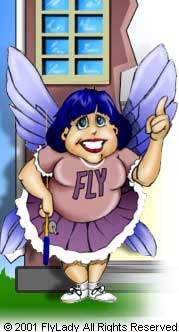
But how can Better ever happen when you can't remember how to make it happen?
FlyLady.net does not address brain injury — just the symptoms of CHAOS, ADD, and drowning in confusion and disorganization. It provides a gentle but effective way out of the dark and chaos and confusion, starting with the simplest of babysteps:
If you can handle that, you're on your way.
Sound silly? Not at all. It is the Real Life application of Lewis'advice in "The Lookout" (see above) via The Story of Goldlocks and the Three Bears: "Naw, you sequence just fine," he told Chris. "You just gotta start at the end and work backwards. You can't tell a story until you know how it ends."
The end? A clean sink, polished and dried.
Ordinarily, this would be the very last step before company arrives. Ordinarily we do this only after the house is clean, table set, food cooked and warming in the oven. It it makes no sense to do it before the dishes are washed and counter-tops cleaned. Only then do you wash and dry the sink. End of story.
But there's nothing ordinary about brain injury. For those whose
challenges are now far beyond the ordinary, Flylady's "Polish the Sink"
approach does for domestic disaster just what Lewis did for Chris: it cuts
through all the steps and clutter and confusion to the end — then asks
"What is the step before that? — and before that?"
Everything else flows from there. Give it a try.
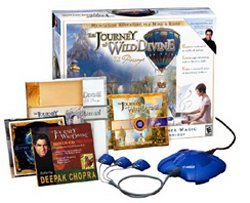
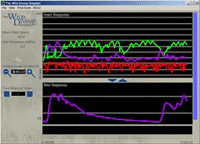 The Journey to Wild Divine is a biofeedback "game" that offers many
of the same benefits as clinical programs costing thousands. Finger
sensors document actual physiological changes, explaining the many physical
benefits long-attributed to yoga and ki training.
The Journey to Wild Divine is a biofeedback "game" that offers many
of the same benefits as clinical programs costing thousands. Finger
sensors document actual physiological changes, explaining the many physical
benefits long-attributed to yoga and ki training.
The Passage is the first program. In order to play the game, you must learn to breathe and you must learn to relax - while focusing attention.
Wisdom Quest builds on the base skills to teach more advanced meditation and breathing techniques.
Healing Rhythms is not a game. It is a stand-alone program of exercises that artfully combines biofeedback training, guided meditation, and breathing techniques.
The Grapher Expansion Pack (an add-on to Passage but included in Healing Rhythms) displays the physiology behind the game. Watch the interplay of mind and body on-screen. Watch your heart rate and blood pressure changing, under your control, in real time. Watch your blood pressure or heart rate changing, under your control, in real time. See for yourself the effects of breathing and relaxation exercises.
See also the clinical information page for RESPeRATE, a simple biofeedback trainer that lowers blood pressure; at the bottom of the page you will find a list of reports from medical journals specializing in hypertension and reporting the benefits of breathing exercises over drugs. RESPeRATE is a device that effectively lowers blood pressure through breath training. But Wild Divine is much more interesting.